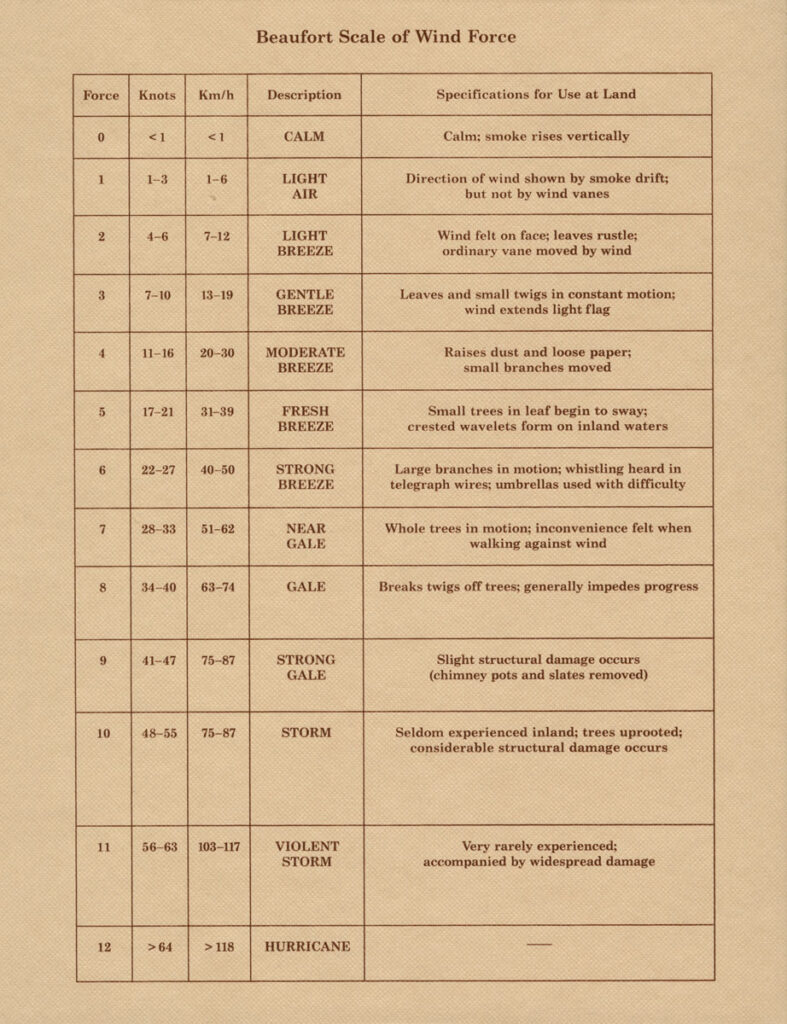The Work of Wind — Land
‘The Work of Wind: Land’ takes as its conceptual starting point the Beaufort Scale of Wind Force for “Use on Land”—the index of thirteen levels measuring the effects of wind force published in 1807 by British sea admiral Sir Francis Beaufort. Through its systematic organization of observation, the scale measures the wind speed by observing how it decomposes on land (e.g. leaves are blown from trees, chimney pots lifted, houses are destroyed) and, respectively, how it composes at sea (e.g. waves are formed). This initial collection is the companion volume to the forthcoming ‘The Work of Wind: Sea’; it starts with a long introduction on decolonial solidarity and unlearning by Etienne Turpin, which is followed by a reflective essay by philosopher Allen S. Weiss. The wind scale’s thirteen distinct forces are then echoed by thirteen contributions that consider the weather, the wind, and the atmosphere as planetary and political entities. Both volumes aim to foster a more intimate awareness of the relentless legacies of colonialism and capital excess that undergird contemporary politics of sustainability and climate justice. In the context of the accelerating extinction crisis, the Beaufort Scale of Wind Force thus becomes a ready-made diagram of prediction and premonition. While the books’ titles might suggest a weather project, the editorial concern was not to make a project ‘about wind’, but to better understand the forces of composition and decomposition predicated on extraction, dispossession, accumulation, and infrastructure.

